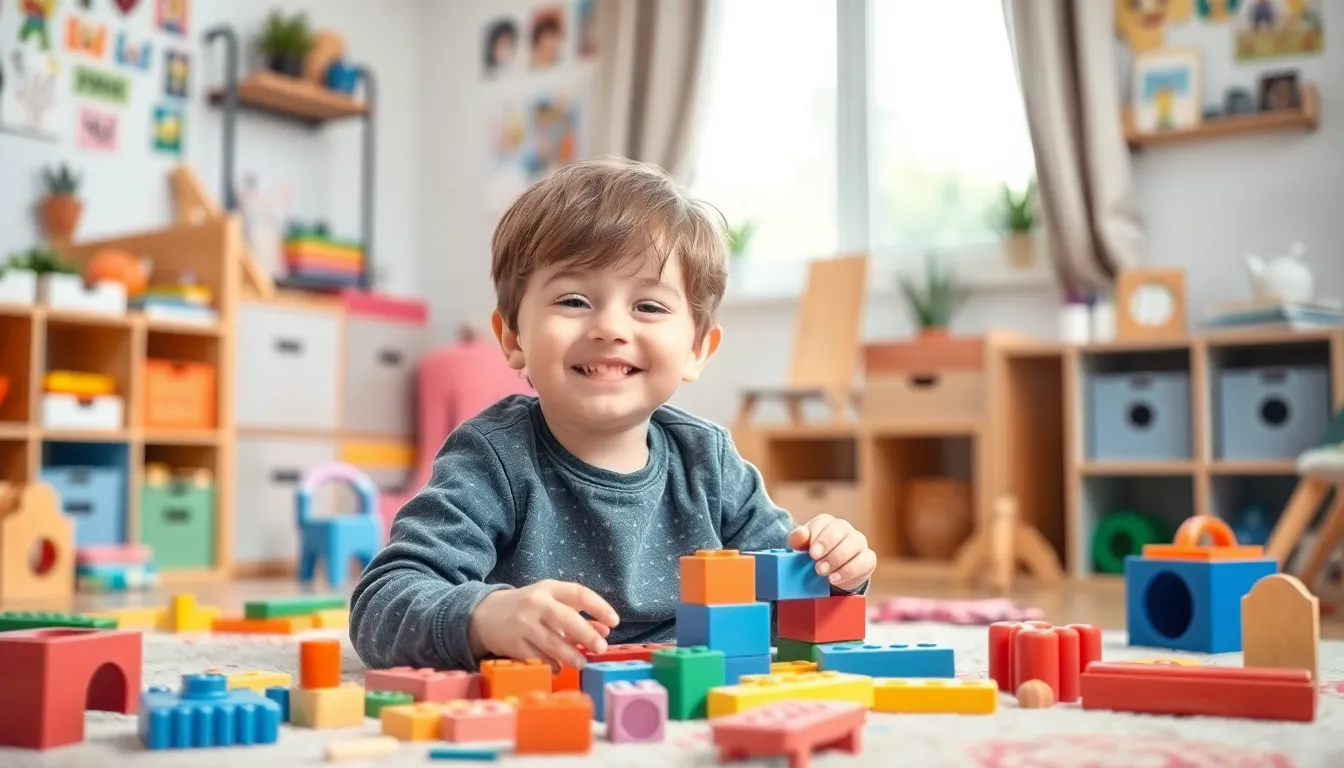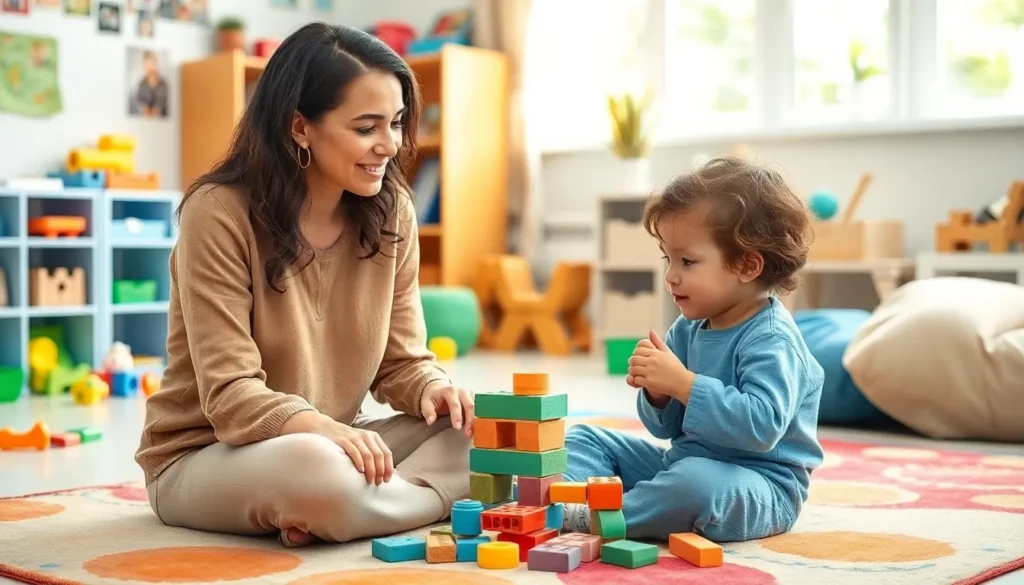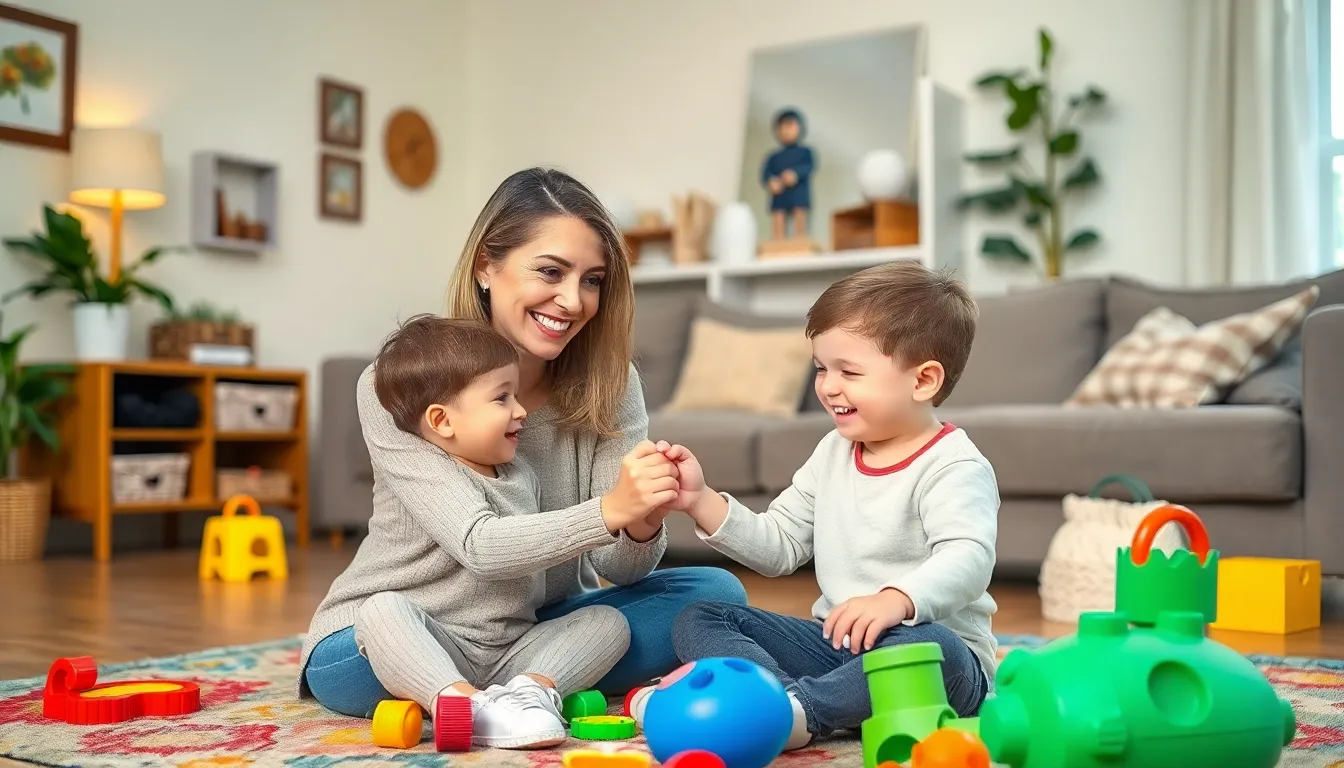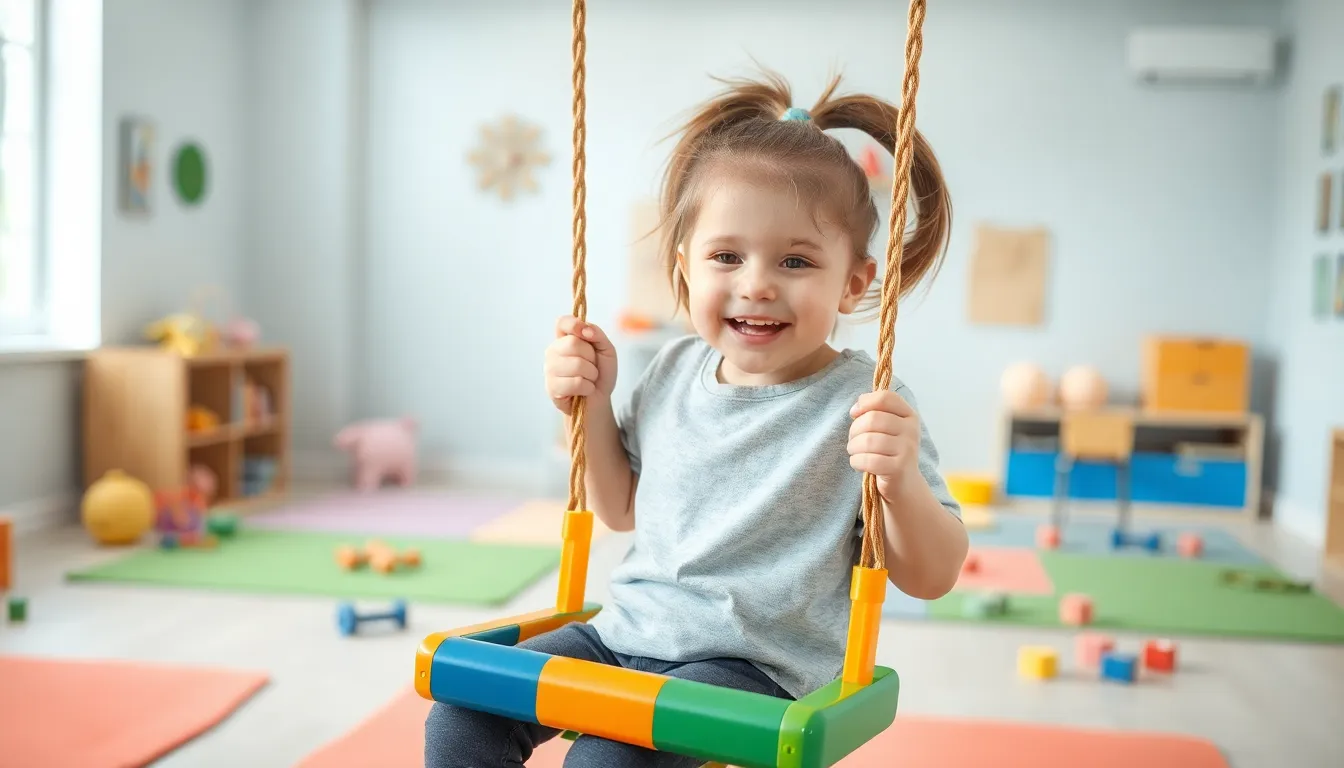Navigating the world of child therapy options can feel like trying to find a needle in a haystack—if that needle were also a Lego piece and the haystack were made of stuffed animals. Parents often wonder what’s best for their little ones, and with so many choices out there, it’s easy to feel overwhelmed. But fear not! Understanding these options doesn’t have to be as tricky as assembling that toy without the instructions.
Table of Contents
ToggleOverview of Child Therapy Options
Child therapy offers various approaches tailored to meet individual needs. Each method addresses specific emotional and psychological challenges. Common options include cognitive behavioral therapy (CBT), play therapy, and family therapy.
Cognitive behavioral therapy focuses on altering negative thought patterns. This approach helps children develop healthier coping strategies. Play therapy engages younger children through play, allowing them to express feelings and thoughts non-verbally. In this setting, therapists facilitate understanding through creative expression.
Another effective option is family therapy. This method involves family members in the treatment process, promoting communication and understanding. It addresses relational dynamics and helps resolve conflicts that may affect the child’s well-being.
Art therapy utilizes creative arts to foster emotional expression. Children communicate through various art forms, enabling therapists to gain insights into their inner worlds. Music therapy similarly encourages expression through melody and rhythm, enhancing emotional connection and relief.
Support groups represent an additional resource. These gatherings provide peer interaction, helping children realize they aren’t alone in facing challenges. Here, sharing experiences fosters camaraderie and support.
Behavioral therapy emphasizes modifying problematic behaviors through reinforcement techniques. This structured approach benefits children with specific behavior issues by promoting positive behavior while reducing negative behaviors.
Each therapy option offers unique benefits. Selecting the right approach hinges on individual needs, preferences, and the specific challenges faced. Parents may find it beneficial to consult with professionals who can guide them through this varied landscape of options.
Types of Child Therapy

Various child therapy options offer tailored approaches for addressing emotional and psychological needs. Understanding each type helps parents make informed decisions about their child’s well-being.
Play Therapy
Play therapy provides a safe environment for children to express feelings and thoughts through play. This method is particularly effective for younger children who may struggle with verbal communication. Through toys and activities, therapists facilitate emotional expression, helping kids process experiences and develop coping skills. Children often feel more comfortable and open when engaging in play, making it easier for therapists to identify underlying issues. This approach often leads to improved emotional regulation and social skills.
Cognitive Behavioral Therapy
Cognitive behavioral therapy (CBT) emphasizes the relationship between thoughts, feelings, and behaviors. Therapists help children identify negative thought patterns that contribute to anxiety or depression. By challenging these thoughts, children learn to adopt more positive perspectives. Skills developed in CBT allow kids to manage stress and make healthier choices. This structured approach is evidence-based and is proven effective for various mental health challenges, including phobias, depression, and anxiety disorders.
Family Therapy
Family therapy involves all family members in the therapeutic process. This approach aims to improve communication and resolve conflicts within the family system. By addressing dynamics that impact a child’s behavior or emotional state, therapists help families understand each member’s influences on one another. Involving the entire family provides a broader support network for the child, facilitating healthier relationships. Consequently, families often find strengthened connections and enhanced coping skills through this collaborative therapy style.
Benefits of Child Therapy
Child therapy offers numerous advantages that foster emotional and psychological growth in children. Through targeted techniques, therapists support children in overcoming various challenges.
Emotional Development
Emotional development flourishes through therapy, providing children a safe space for exploration. Therapy encourages self-awareness, helping them recognize and understand their feelings. Children develop coping skills that enable them to manage stress and anxiety effectively. Communication improves as they learn to express emotions constructively. Social skills also get enhanced through interactions in therapy sessions, allowing children to form better relationships with peers and family. As children navigate their emotions, their overall well-being stabilizes.
Behavioral Improvement
Behavioral improvement emerges as a key benefit of child therapy, addressing specific habits or actions. Through therapy, children learn to modify negative behaviors using reinforcement techniques. Strategies often include setting achievable goals, which motivates them to exhibit positive behavior over time. Therapists collaborate with children, fostering accountability and self-discipline. Observing progress helps build self-esteem and encourages further positive changes. Changes in behavior contribute to a healthier home and school environment, benefiting the child in multiple aspects of life.
Choosing the Right Therapy
Identifying the best therapy for a child requires careful consideration of individual needs and professional guidance. Prioritizing these factors helps streamline the decision-making process.
Assessing Individual Needs
Evaluating a child’s emotional and behavioral challenges forms the foundation of therapy selection. Recognizing symptoms like anxiety, depression or behavioral issues directs parents towards appropriate options. Each child presents unique characteristics that influence the effectiveness of specific therapies. Observing how the child interacts with peers or family members can provide valuable insight. Resources such as questionnaires or assessments may also aid in understanding their needs. Gathering input from teachers or caregivers often reveals additional perspectives on the child’s behavior.
Consulting Professionals
Engaging with mental health professionals greatly enhances the selection process. Therapists possess the expertise to identify suitable approaches based on the child’s specific circumstances. Parents should seek recommendations from pediatricians, educators or other parents experienced in child therapy. Understanding the qualifications and specialties of potential therapists ensures a good fit. Scheduling an initial consultation allows families to gauge rapport and comfort levels, which are crucial for effective therapy. Review their notes on previous experiences and ensure all concerns are addressed to facilitate a supportive environment.
Navigating the world of child therapy can feel overwhelming for parents. With a variety of options available it’s essential to approach this journey with clarity and purpose. Each therapy type offers unique benefits that cater to individual needs and challenges.
By consulting with mental health professionals and assessing their child’s specific circumstances parents can make informed choices that foster emotional growth and behavioral improvement. Ultimately the right therapy can create a supportive environment that nurtures a child’s well-being and enhances their overall development. Taking these steps ensures that children receive the care they need to thrive both at home and in school.






